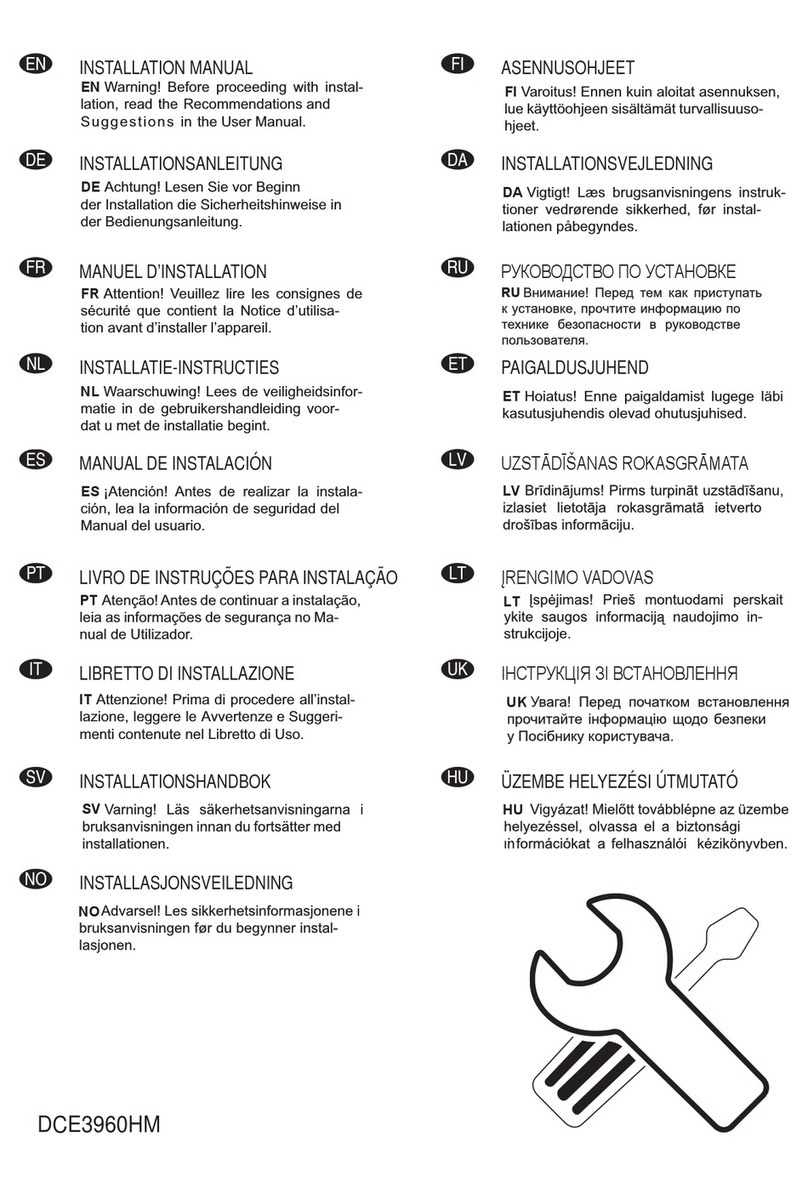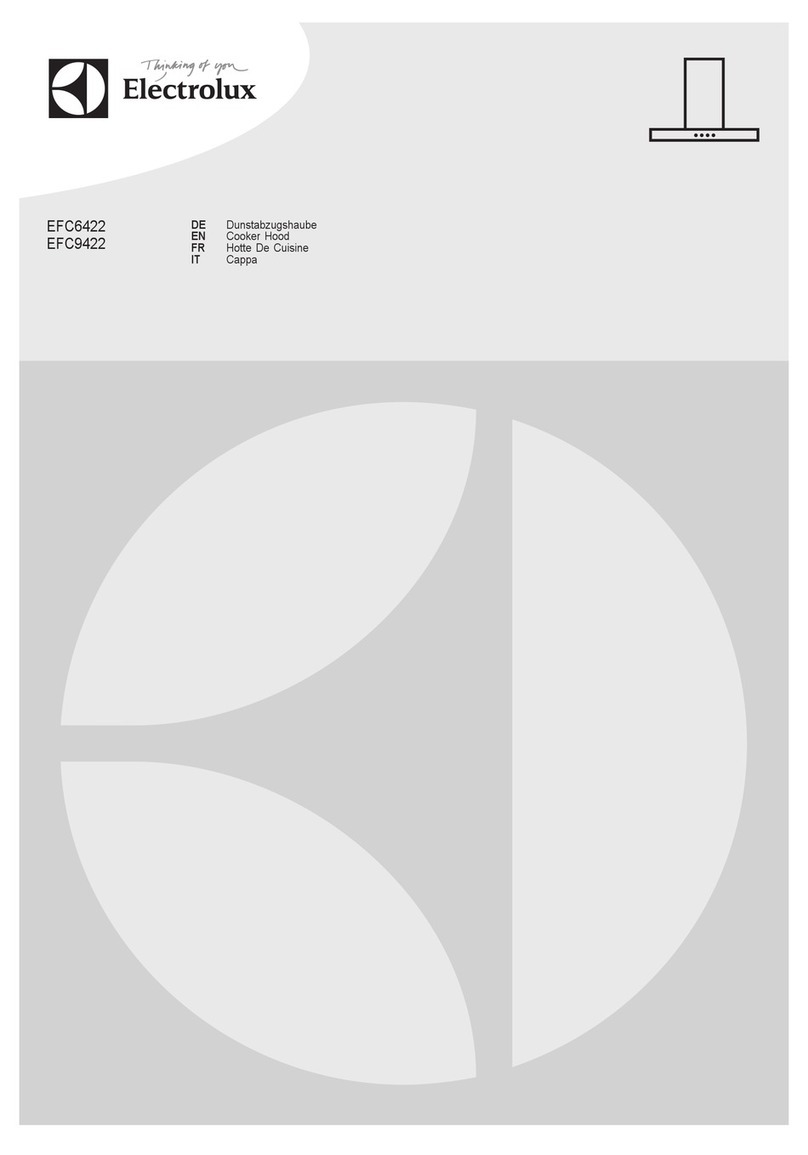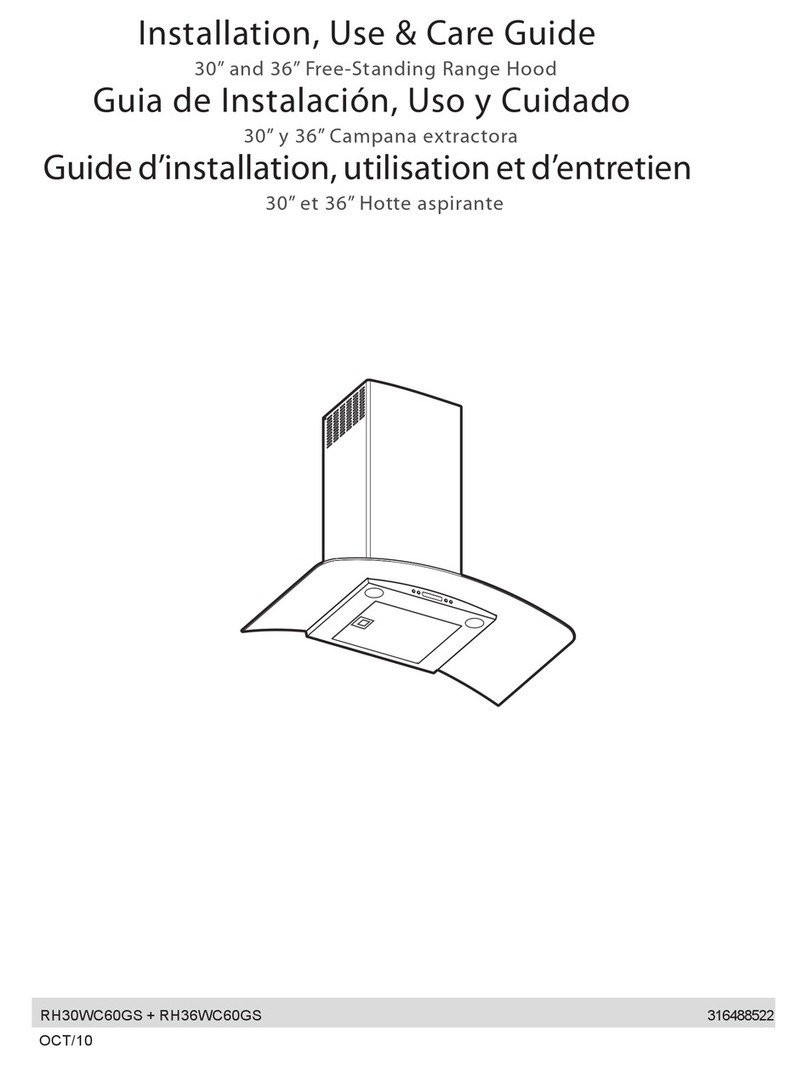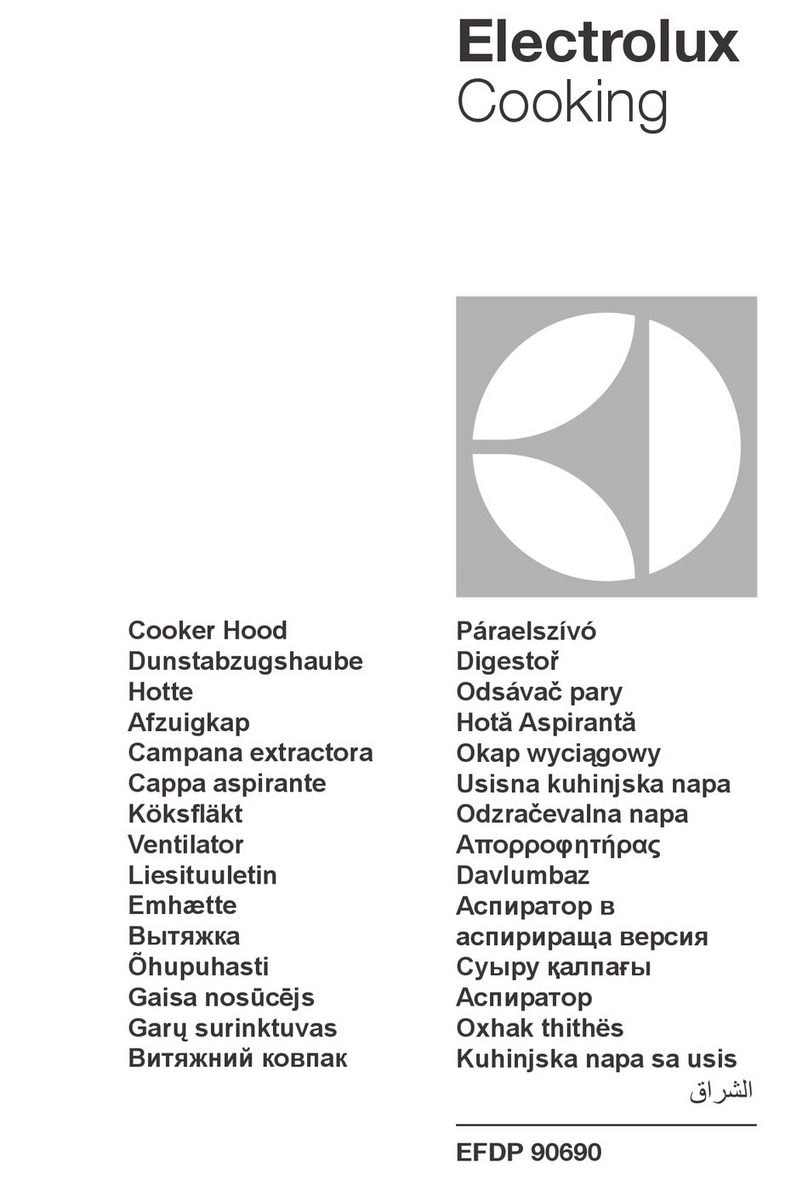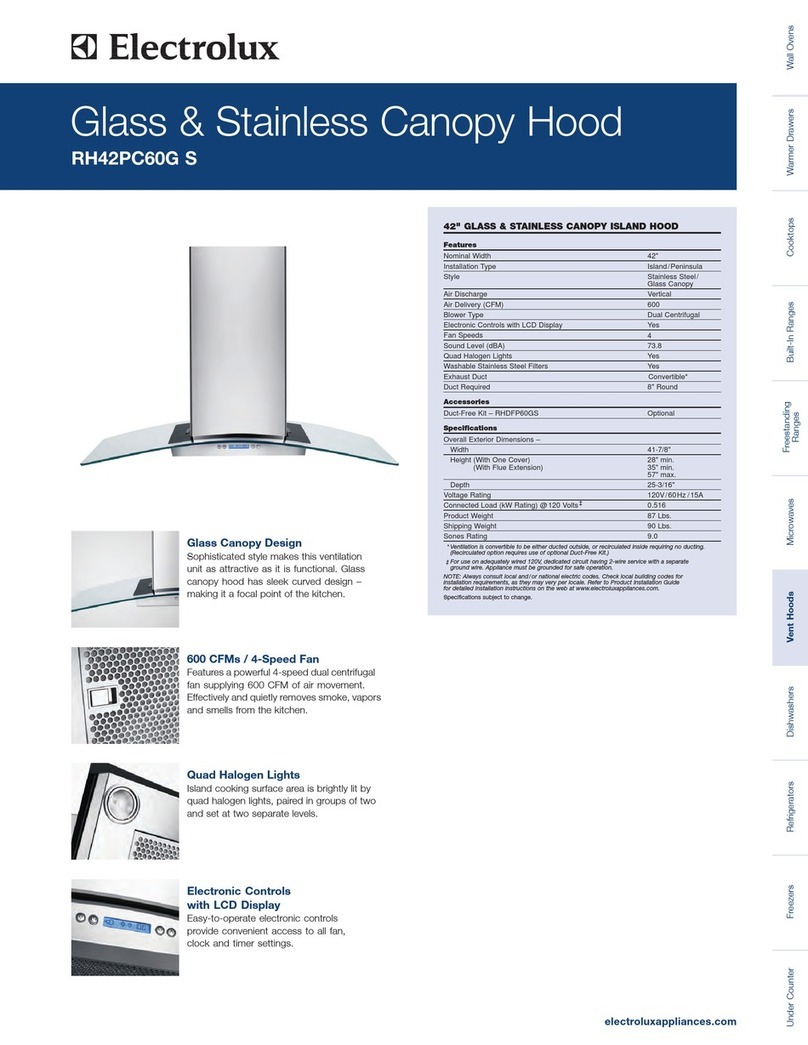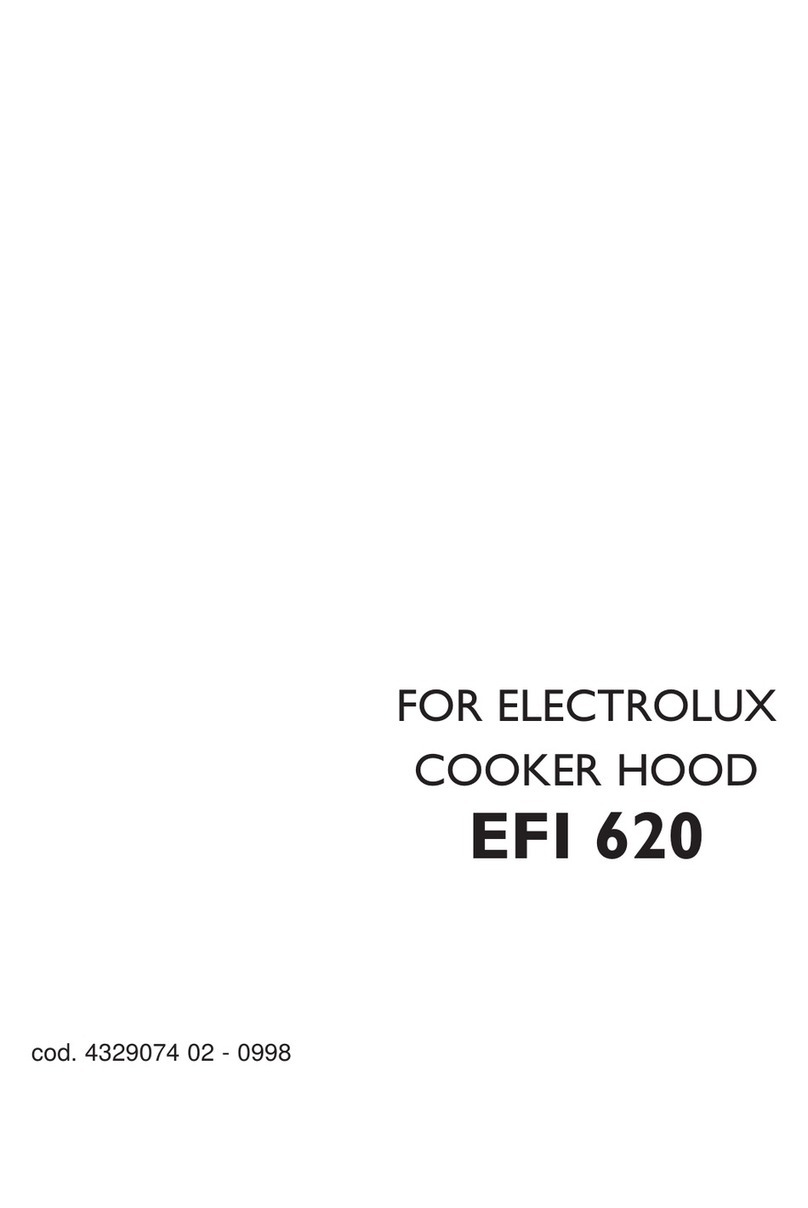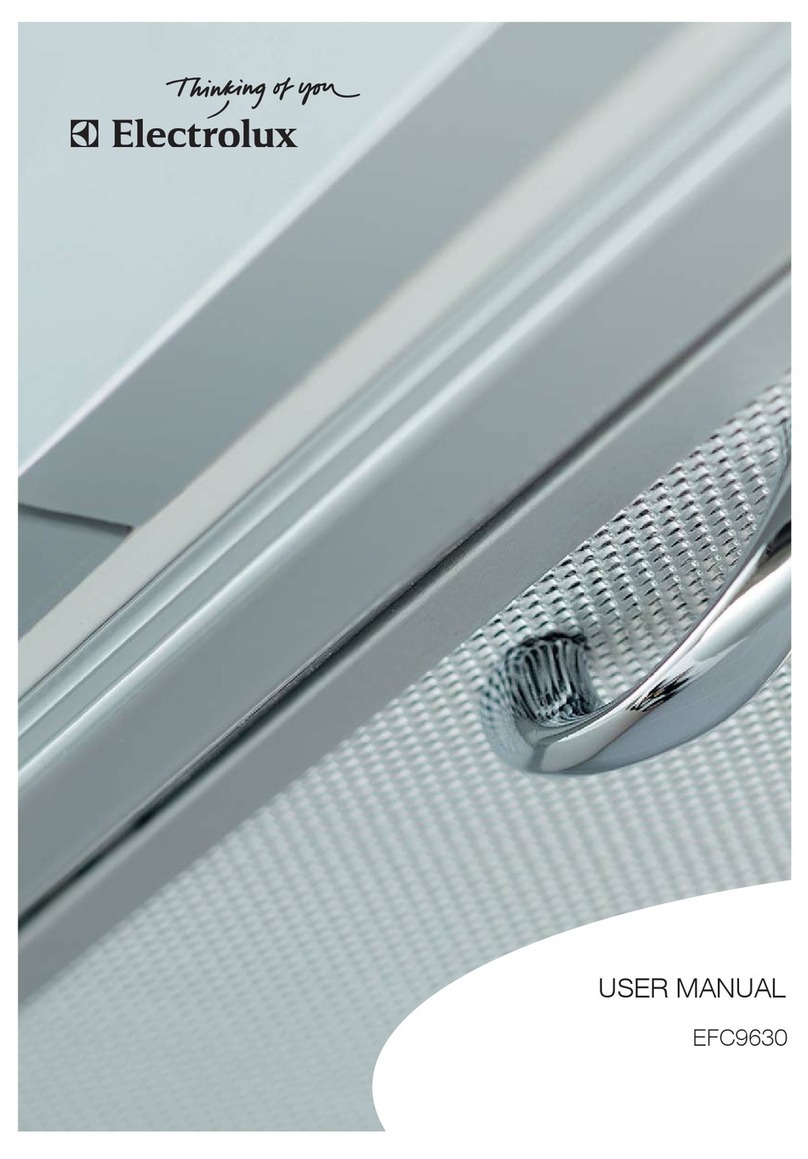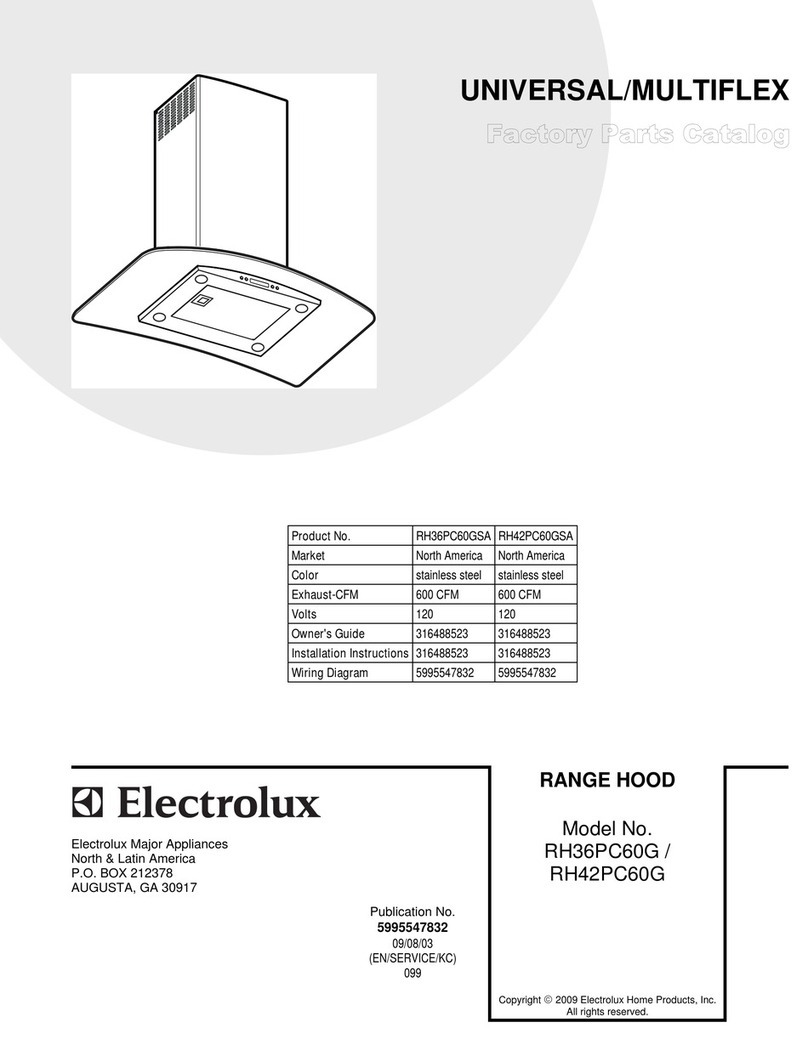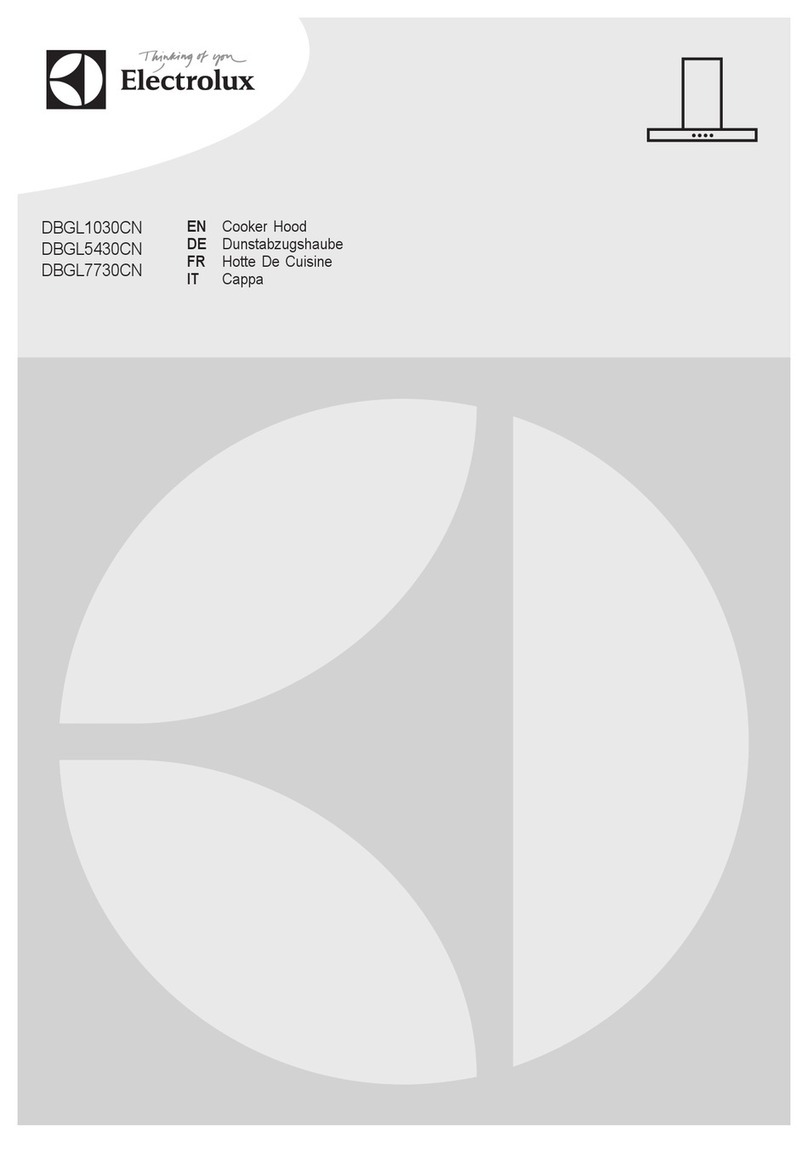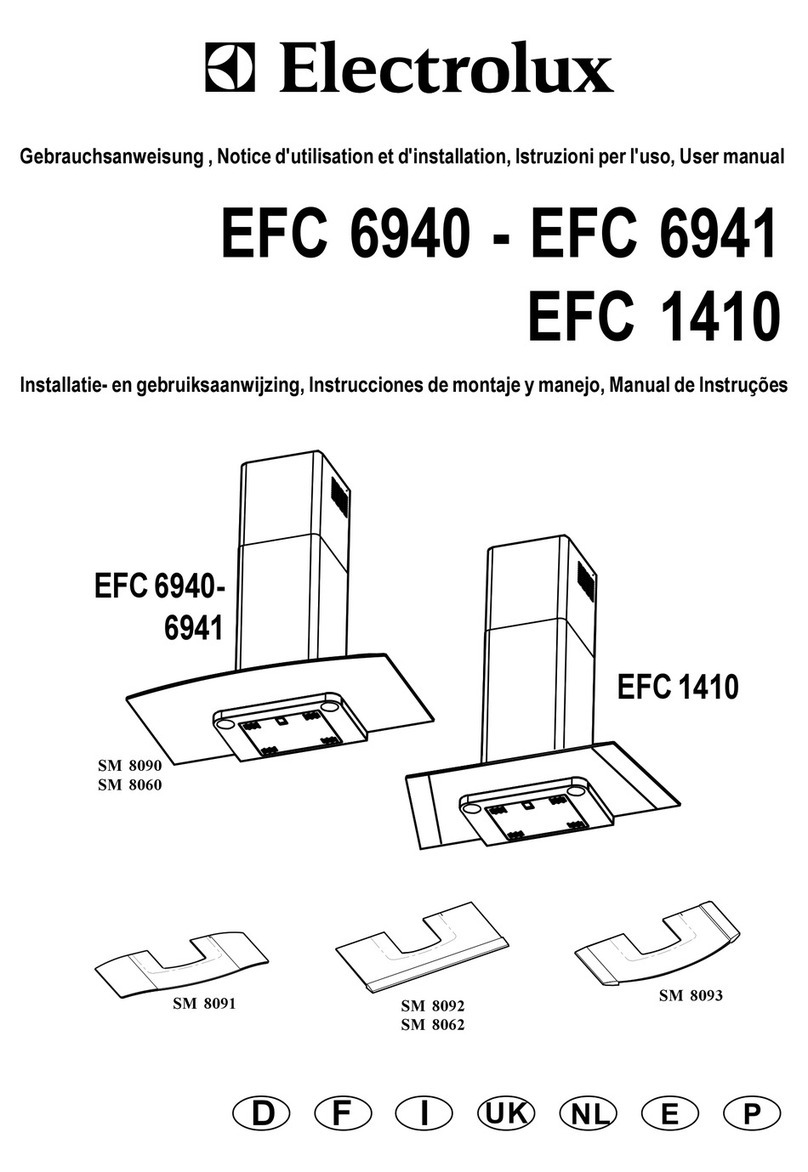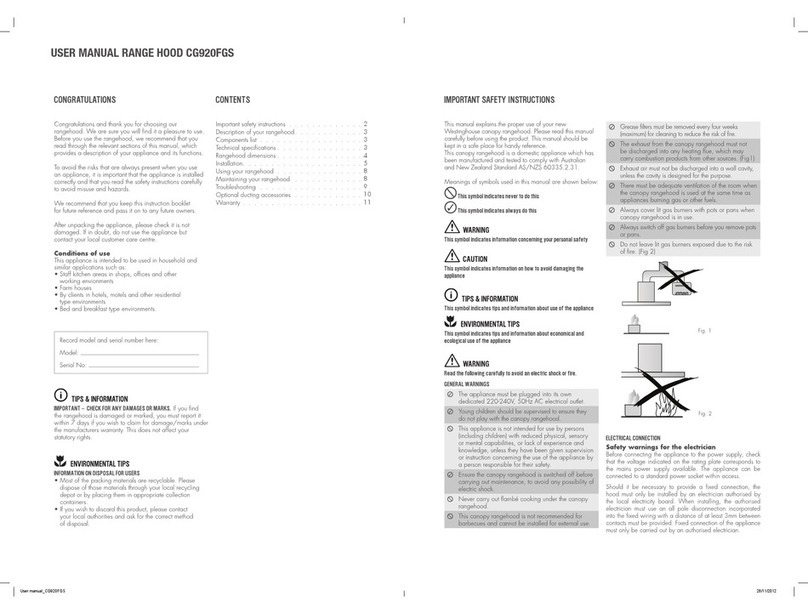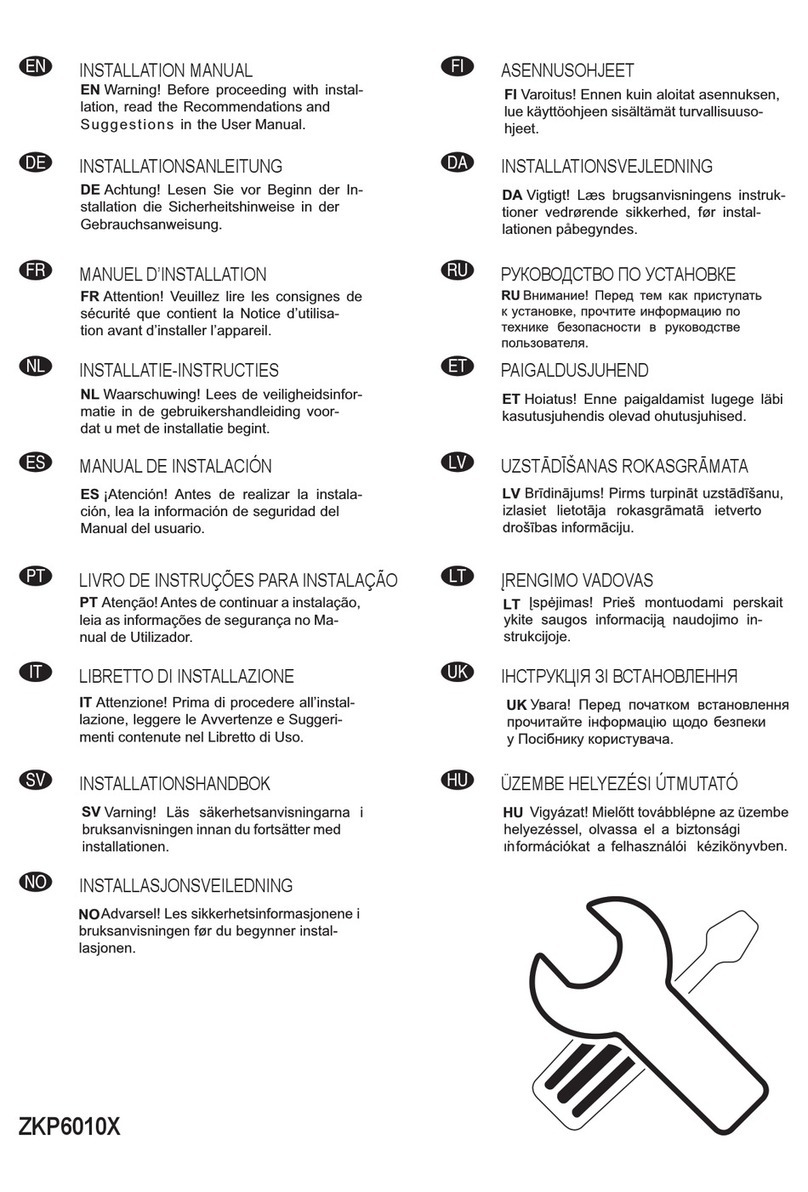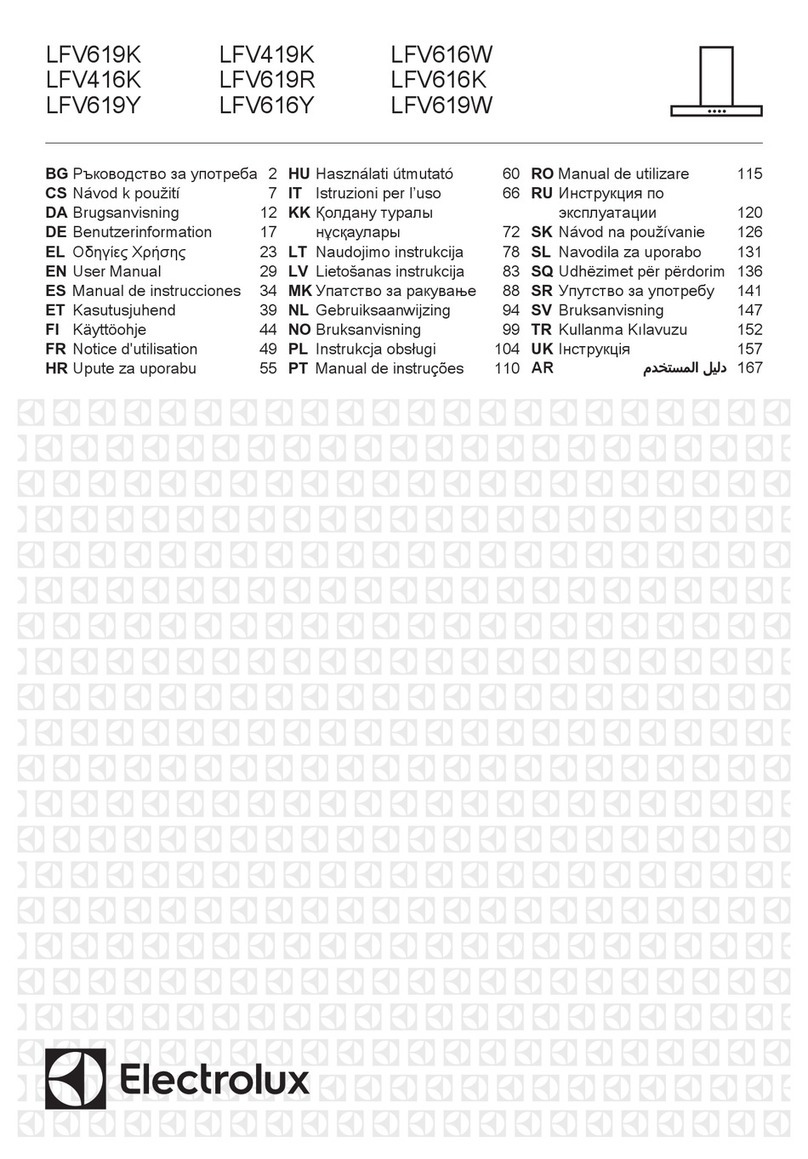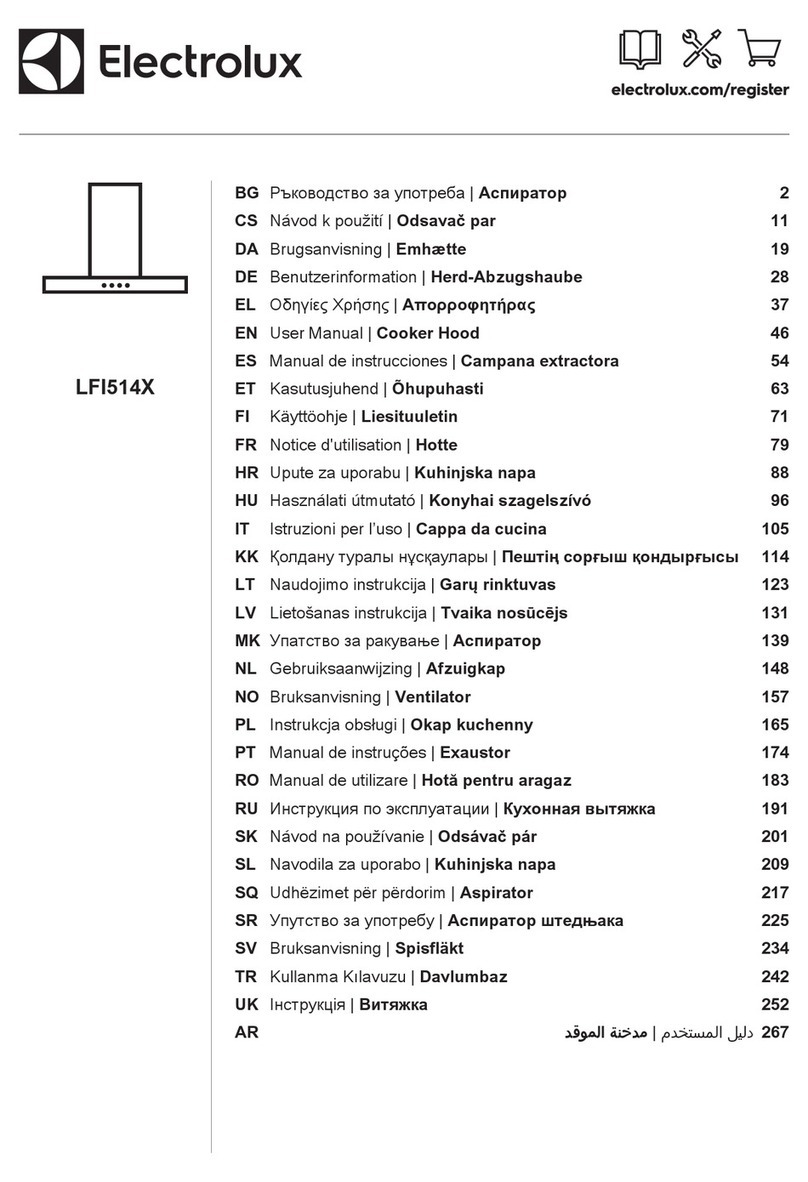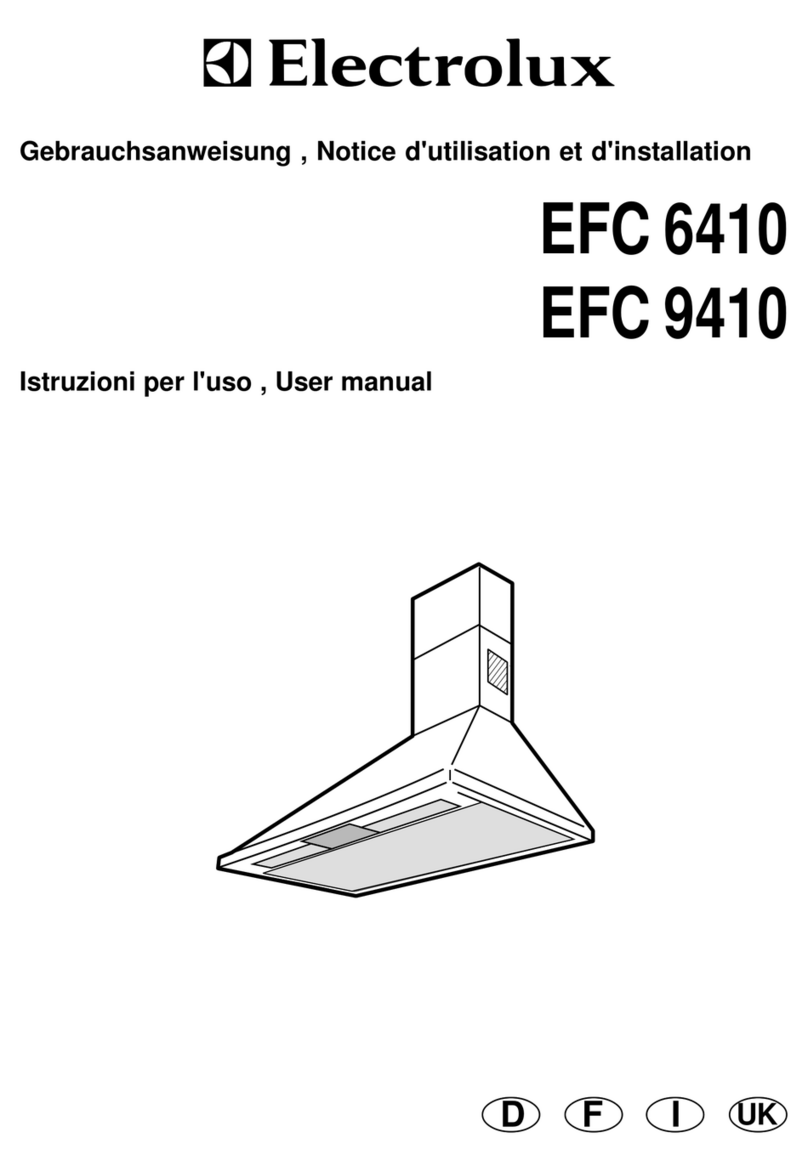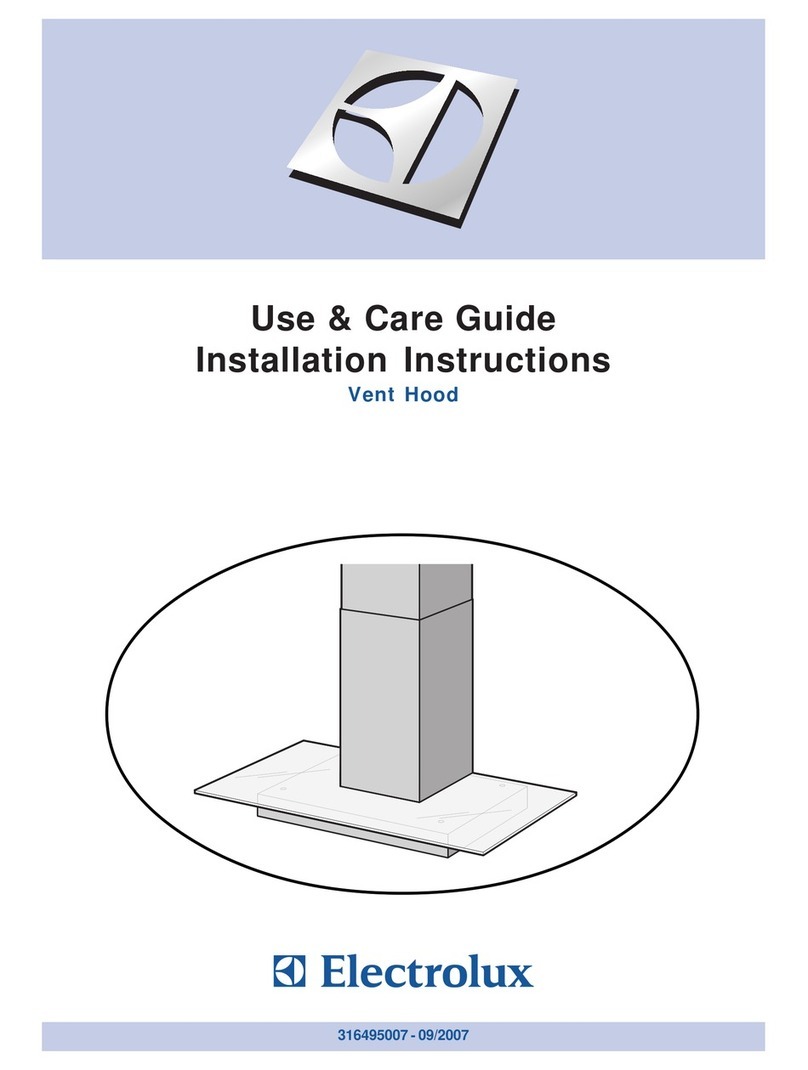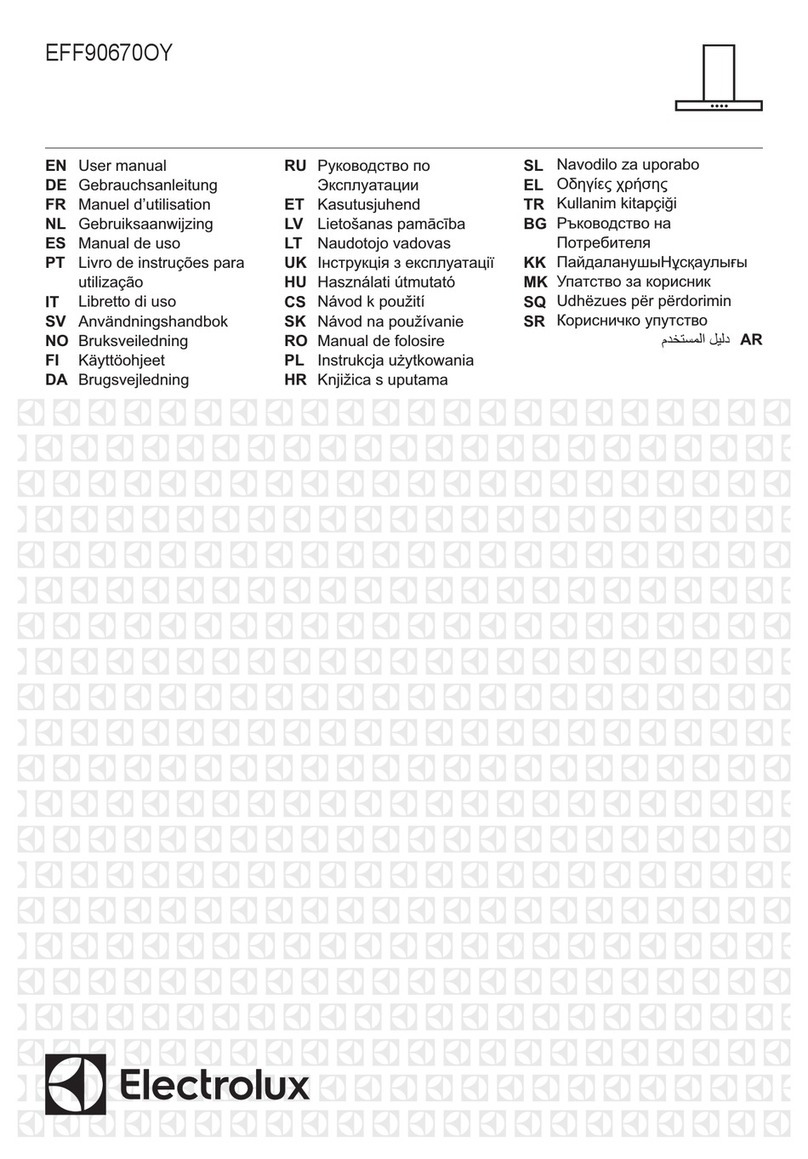45
Correct ventilation
If the cooker hood should be working correctly
there must be an underpressure in the kitchen. It is
important to keep the kitchen windows closed and
have a window in an adjacent room open.
Using the cooker hood
The control panel
The control panel is on the front of the hood. Best
results are obtained by using low speed for normal
conditions and high speed when smells and steam are
more concentrated.
Lighting switch, on and off.
On and Off switch.
Speed adjustment switch.
Switch for intensive speed. The intensive speed
will last for about 5 minutes, the time can vary a
little and it can not be changed. The intensive
speed function can be turned off before 5
minutes by pressing the intensive speed switch
once again. If the hood was on before the
intensive speed was started it will automatically
return to the previous speed after five minutes or
when you turn off the intensive speed. If the hood
was off before the intensive speed was turned
on, it will automatically stop. Use the intensive
speed function to expel the last of the cooking
smells.
Turn the hood on a few minutes before you start
cooking then you will get an underpressure in the
kitchen. It should be left on after cooking for about 15
minutes or until all steam and smells have
disappeared.
Maintenance and cleaning
Important to know
Great care must be taken if the hood is used at the
same time as a burner or fireplace (e.g. gas,
diesel, coal or wood heaters, water heaters, etc.),
as the hood will expel air which is required by
these other appliances. Attend to it by opening a
window. Not applicable for cooker hoods used in
recirculation mode.
Cleaning the hood
Clean the outside of the hood using a damp cloth
and a mild detergent. Never use corrosive,
abrasive or flammable cleaning products. The
control panel may only be cleaned with a lightly
damped cloth.
Cleaning the grease filters
Clean the filter every month or every other month
according to how much the hood is used. The cleaner
the filters, the better it collects grease. Remove the
filter by (Fig. 1):
Grab hold of the handle and push the filter
backward.
Pull the filter down at the front and remove it
forward.
The filter is made of aluminium wires on which the
grease collects. Clean the filter in hot water using a
detergent, or in a dishwasher. Let the filter dry before
putting it back. Note that a dishwasher may discolour
the filter.
Clean the filter regularly. The grease that
collects in the filter and the duct could
ignite if a hot plate is left on (or if
overheating occurs).
Fig. 1
Before doing any maintenance work on the
hood, disconnect it from the main supply by
disconnecting the plug from the wall socket or
unscrewing the fuse.
Do not operate the fan at a higher speed
than necessary. The low speeds are
adequate for ordinary requirements while
cooking. The high speeds should be used
only if food has burnt while cooking, or for
other strong fumes.
Clean the filter frequently. A clean filter
minimises the motor load, which helps the fan
to function more efficiently.

